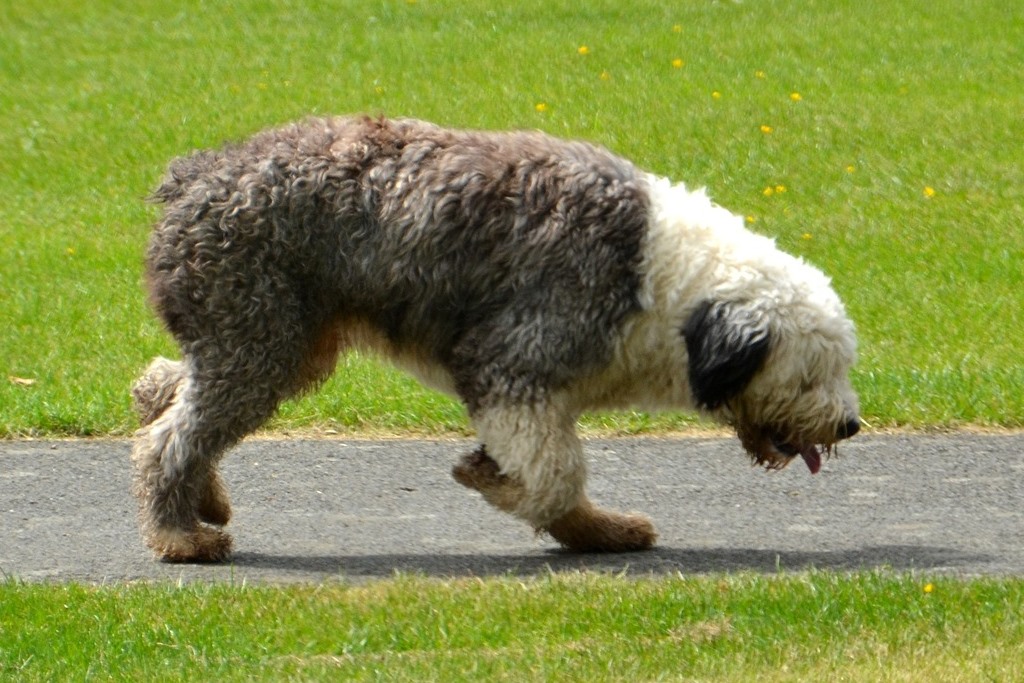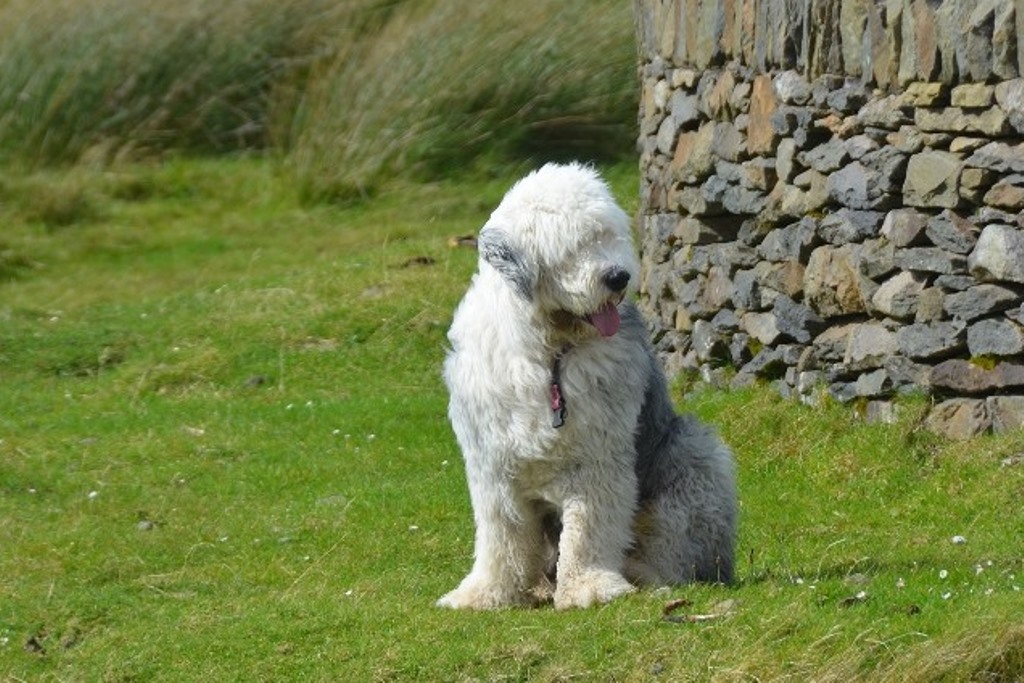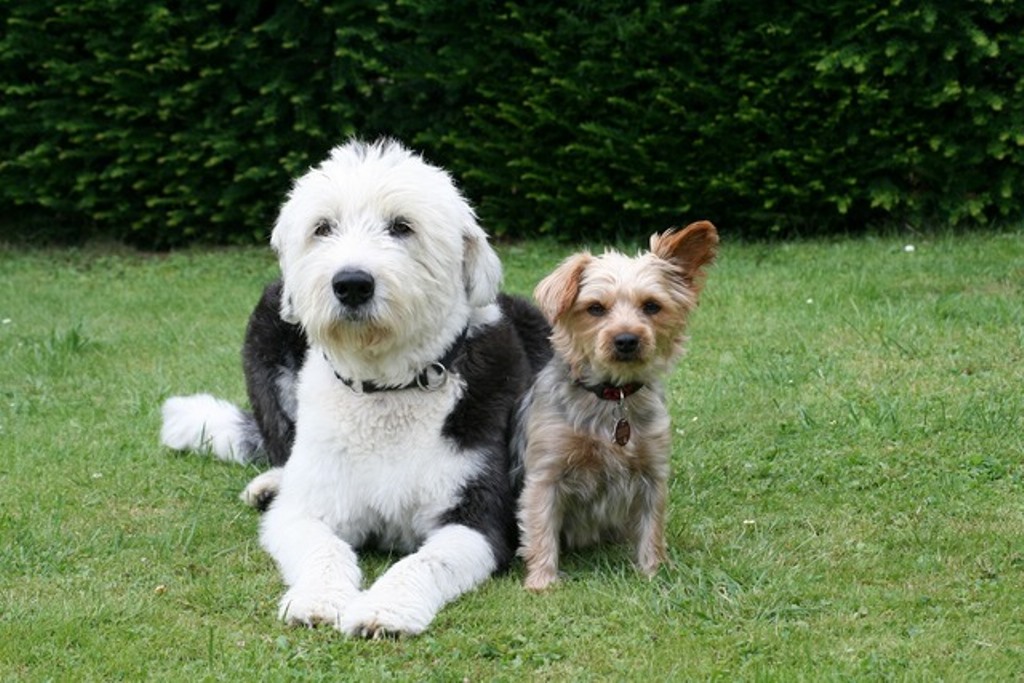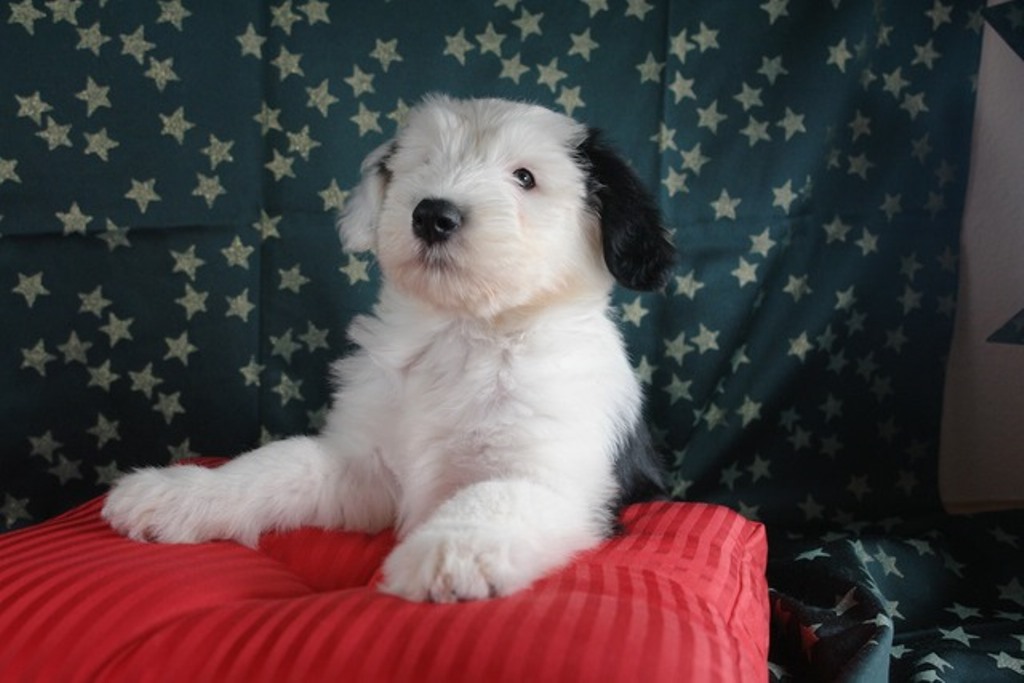
Key Characteristics of the Bobtail Dog Breed
The origins of the bobtail dog breed are very uncertain, it is thought that their actual ancestors came from European Owtcharka and Bergamasco shepherds, crossed with local dogs. It is also called the Old English sheepdog and has been registered as British. Their area of origin is believed to be the County of Devon and also the Highlands of Scotland; responsible for the rustic character and abundant coat.
The thick coat is quite normal for dogs that live or have lived in areas with harsh climatic conditions. Another theory, since some similarities have been found in its morphological aspects with the ‘Shepherds of Russia’ and Asian herding dogs, wants them to be related to other shepherd dogs that originate from a single strain in western Asia.
However, this dog originated as a working dog, accustomed to a rustic life. They helped drive the herds to market; bobtails are excellent at this work, it is even said that their coats were sheared every year along with the sheep, and the farmers‘ wives would turn the dogs’ shearing and the sheep's wool into warm clothing.
A curiosity related to this breed is that many of them have been featured in cartoons: the colonel from Charge of the 101, Moses from Albert the Wolf and Max, Prince Eric's dog from Disney's The Little Mermaid is a bobtail. And not only that, Al Pacino's dog in Serpico was of this breed and even Paul Mccartney had one, to whom he also dedicated a song, ‘Martha my dear’.
Unfortunately, this breed is decreasing drastically, if the trend continues like this, within the year the Old English sheepdog will be officially listed as a vulnerable indigenous breed. And that means that within a few years there may be so few of them that the continuation of the species is no longer guaranteed.
Character of the bobtail dog breed

The bobtail is a docile, obedient and very well-balanced dog. It has a lovely nature, a faithful companion of the family, very territorial, which derives from its traditional role as a herding dog. It is an excellent guard dog, showing a protective attitude towards its human pack, but hardly ever displays unmotivated aggression. He is a loyal and reliable dog, very cheerful and affectionate, who loves to be in company and play with children, towards whom he is particularly protective.
He does not like to be alone, in fact he loves to interact with his family, but above all he is a dog that needs the attention he needs to be able to manage his daily routine. Very obedient, it is easily trainable and also suitable for first-time dog owners. It has minimal character defects and loves to be in close contact with its owner. It has no dominant tendencies and its socialisation is easy to manage.
It can also live in a flat, despite its size, but it needs a lot of physical exercise, so it must be taken outside several times and for a long time so that it can give vent to its liveliness. Ideally, however, it should have a garden where it can spend a few hours a day and possibly in the countryside. With strangers he is cautious, but always posed if well socialised.
He gets along well with other animals in the house, whether dogs or cats, as they are part of his pack.
Appearance of the bobtail dog breed

The bobtail is a large dog, the male measuring up to 60 centimetres at the withers and weighing 40 kilograms, the female a little less. It has a compact, balanced and muscular body structure, although this is not noticeable as it is extremely covered in hair. It is a stocky, robust and muscular dog. Its expression expresses intelligence. It has a gait characterised by a peculiar rocking motion when walking. This peculiar gait suggests the typical movement of bears.
The limbs are very muscular, but being completely covered with fur, they are not striking in their power. The feet are small, round, with well curved toes and without spurs. The tail is also very hairy; the dog is usually born with a long tail, but the practice of caudectomy, i.e. the removal of the tail, was widespread.
The well rounded skull is covered with hair, strong, square and truncated muzzle, more or less equal in length to the total length of the head. Well-marked stop. At the bottom of the long, strong and square muzzle is the truffle, always black, wide and voluminous. The ears are small and carried on either side of the head. The eyes, which are generally dark, emerge with difficulty from the thick fur. Their eyes appear to be totally covered but their vision is never impaired.
The coat is abundant, rough-textured, shaggy and without ringlets. The undercoat is woolly and waterproof and felted. The coat colour may be any shade of grey or blue with or without white socks.
Health and care of the bobtail dog breed

The bobtail is a substantially robust breed. It has a life expectancy of 12 to 13 years and more on average. Like many dog breeds, it is prone to hip dysplasia and some may be subject to a genetic disorder, ciliary dyskinesia, which leads to severe breathing disorders. There is no cure for this, but only by DNA testing of the parents can it be avoided that dogs prone to this disease are born.
As far as coat care is concerned, a bath when it is really needed and brushing once a week is sufficient to prevent the coat from becoming knotted. However, special attention must be paid to the hygiene of the ears, as the hair grows copiously there. As a dog with a long, thick coat, it is good to keep any parasites collected in the open air away, especially during the hot season.
And a dog that prefers a long walk to a run, and needs to move daily at least two or three times. If it has regular exercise it is not a dog that tends towards obesity, although its diet must be balanced and controlled to prevent it from overeating.






















